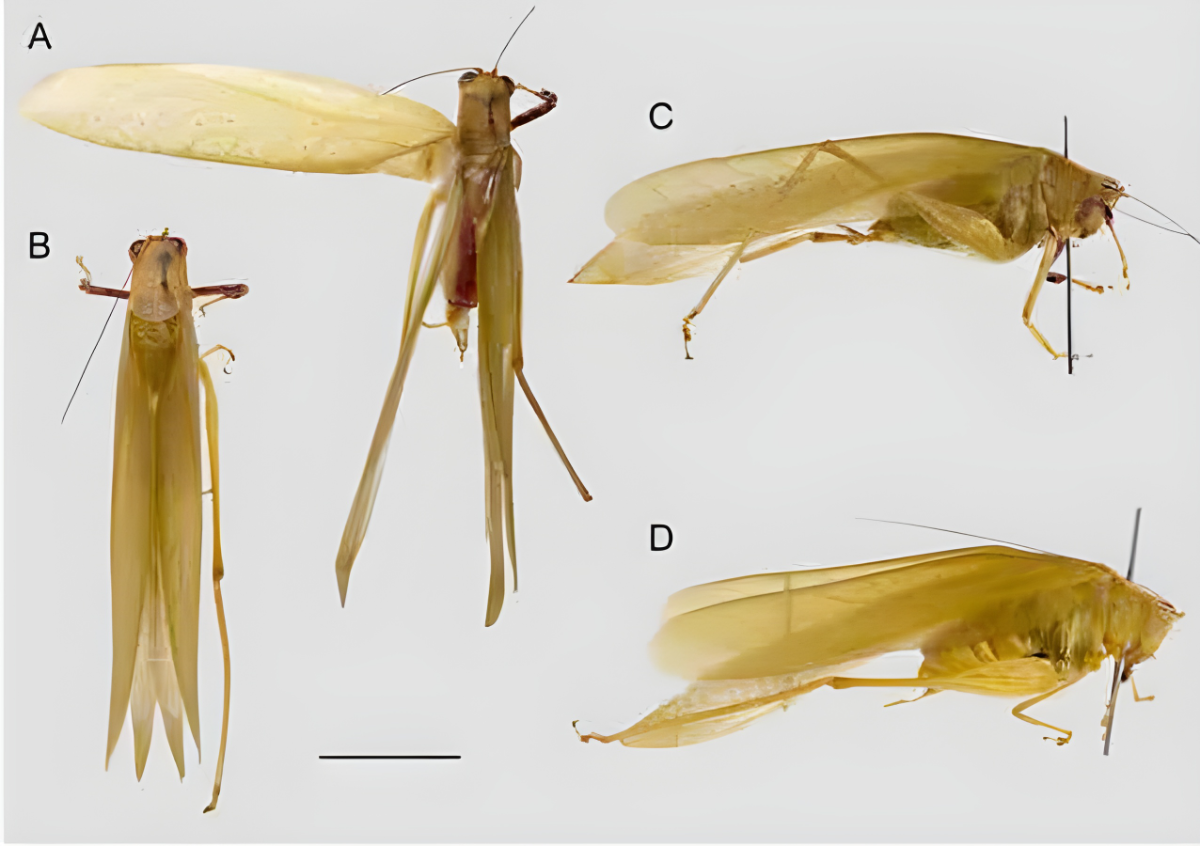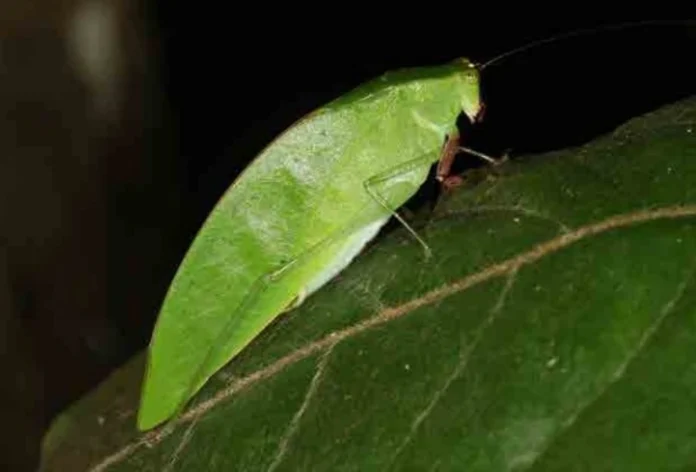Sabah’s new insects: Tapiena dimidia, Tapiena munae
IN Malaysia’s dense rainforests, where the hum of insects never truly fades, scientists have found two new species of leaf-like creatures hiding in plain sight.
Deep in Sabah’s Maliau Basin and the Meligan highlands near Long Pasia, researchers have identified two previously unknown bush crickets, also called katydids. These grasshopper-like insects are famous for their night songs and ability to blend seamlessly into the forest canopy.
The discovery adds to Malaysia’s growing list of new species found in 2025, offering fresh proof that the country’s wilderness still holds secrets yet to be revealed.
Secrets of canopy
The new species, Tapiena dimidia and Tapiena munae, were discovered during a field study led by entomologist Dr Ming Kai Tan of the National University of Singapore in collaboration with the Sabah Forestry Department. Both were found during night surveys when their soft calls echoed through the forest.
Katydids belong to the same family as crickets and grasshoppers. They are known for their delicate wings that resemble leave s and for their rhythmic chirping used to attract mates. Their calls are often too high-pitched for human ears, but in the quiet of the forest, their songs fill the night air with faint pulses of sound.
What makes this discovery remarkable is the remote landscape that these insects call home. Maliau Basin, often known as Sabah’s “Lost World”, and the rugged Meligan highlands are among Borneo’s least explored regions. Their isolation has allowed wildlife to evolve in unique and unexpected ways, creating small worlds within the wider forest ecosystem.

Meet Tapiena dimidia and Tapiena munae
Tapiena dimidia is a bright green insect with red markings along its legs and wings. Its name comes from the Latin word for “half”, a reference to the pattern of fine ridges on its wings that create sound.
The second species Tapiena munae was named in memory of the researcher’s late pet dog Munchie. This species has a red-tinted face and strong, bent appendages tipped with tiny spines. Both were discovered near light traps used to attract nocturnal insects, where the team recorded their songs and documented their features before releasing them back into the wild.
Voices in the night
The researchers also recorded the calls of several other species from the same areas. Each insect has its own distinct rhythm and tone, creating a layered soundscape that helps scientists identify them. These recordings offer new insight into how species communicate and coexist in the dense rainforest.
The sound of a katydid may seem small and fleeting, yet it tells a much larger story. Each pulse and chirp marks the presence of a species that has survived in isolation, adapting to its environment through shape, colour and song.
Why it matters
Though small, these discoveries carry major ecological significance. Katydids play a vital role in the food chain, serving as prey for birds, bats and reptiles while also helping to pollinate forest plants. Their discovery shows Malaysia’s forests remain rich in life, even as many areas face pressure from logging and development.
Each new species adds another piece to the puzzle of how Borneo’s ecosystems function and why they must be protected. For researchers, these findings are a triumph and a reminder of how much remains unseen beneath the canopy.
Still full of surprises
From rediscovered fireflies in Kuala Lumpur to new frogs and fish in Borneo, 2025 has already been a remarkable year for Malaysia’s biodiversity. The addition of LeafTapiena dimidia and Tapiena munae continues that story, highlighting the incredible variety of life that thrives in the nation’s forests.
In the stillness of the night, somewhere in Sabah’s hidden valleys, the faint song of a katydid continues to rise and fall. It is a sound that speaks of survival, mystery and the enduring beauty of Malaysia’s wild heart.







